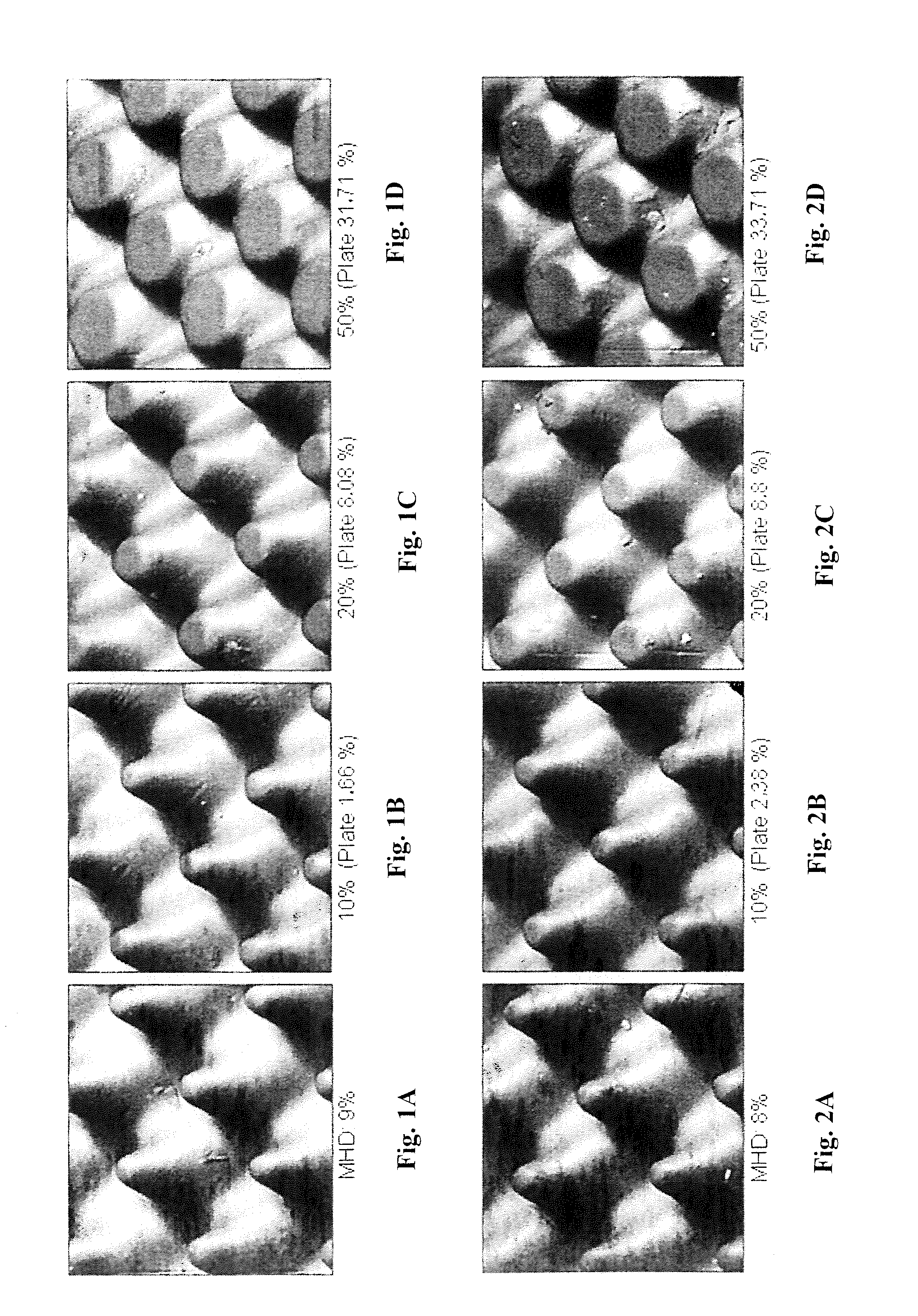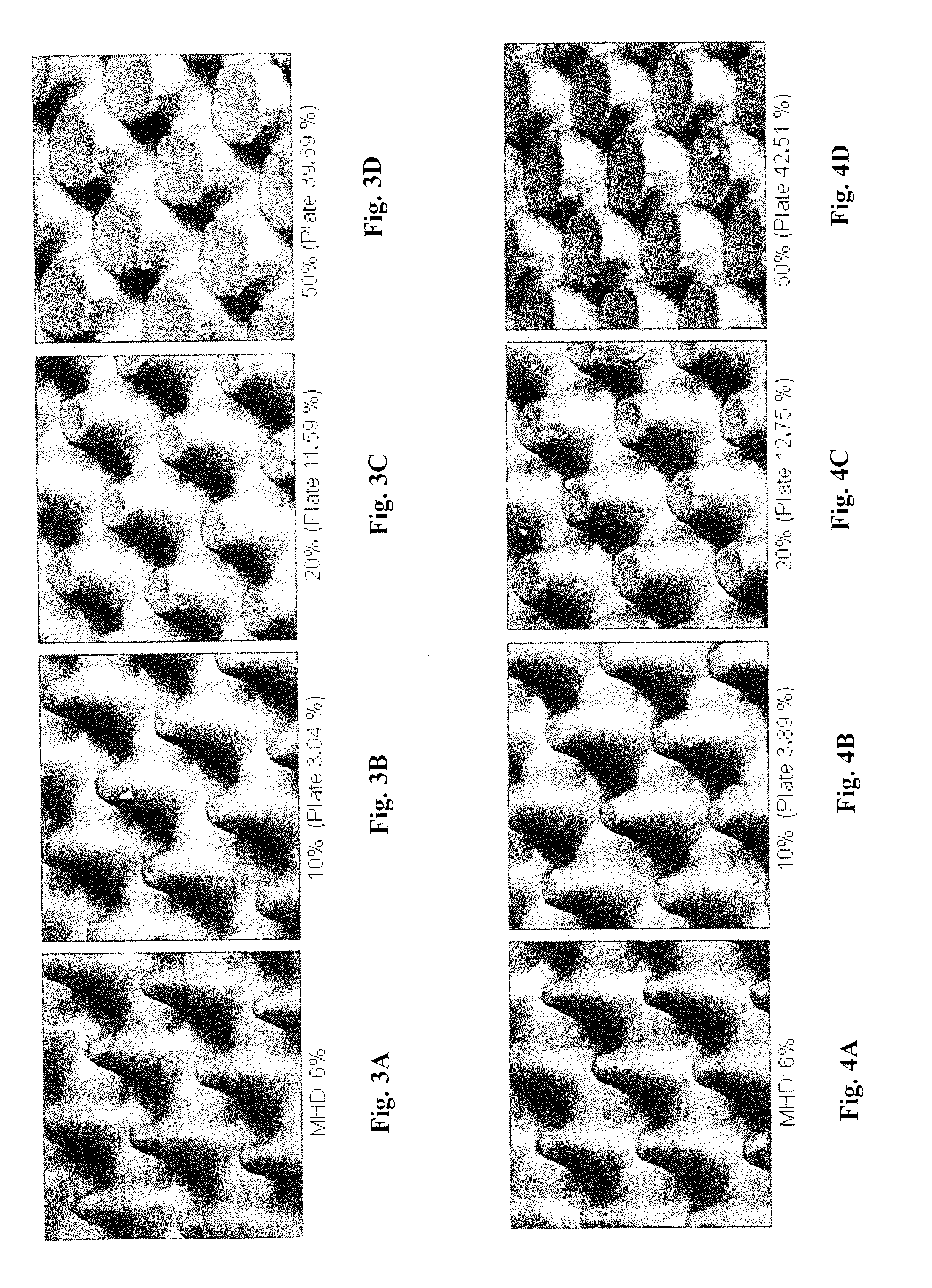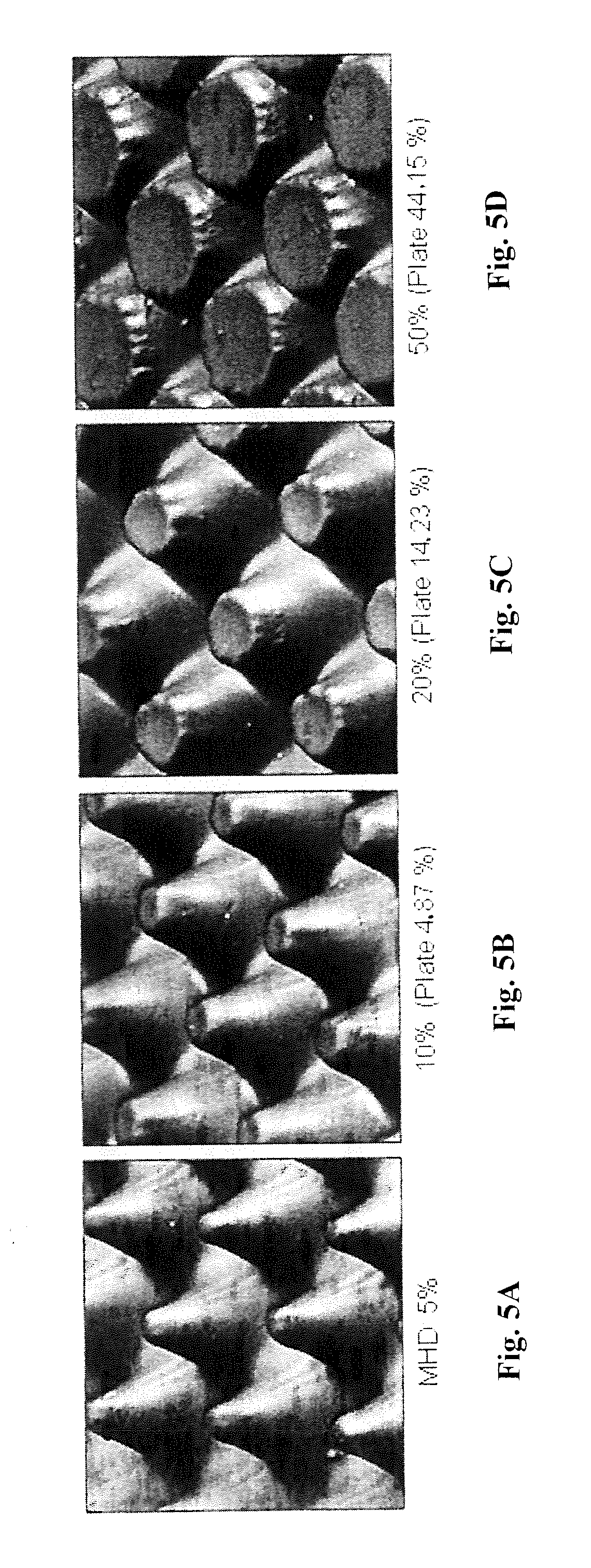Method of Creating Hybrid Printing Dots in a Flexographic Printing Plate
- Summary
- Abstract
- Description
- Claims
- Application Information
AI Technical Summary
Benefits of technology
Problems solved by technology
Method used
Image
Examples
example
[0079]A series of photocurable compositions was prepared using the components set forth below in Table 1. The concentration of the BHT was varied between about 0 and about 2% by weight while the remaining ingredients remained constant. As shown in FIGS. 1A-1D through 5A-5D, the concentration of BHT in the photocurable composition was 0, 0.05, 0.2, 0.96 and 1.92% by weight.
TABLE 1ConcentrationIngredient(% by Wt.)Binder (Kraton D1114)67HDDA15PB100023Irgacure 6513Tinuvin 11300.075BHT0.1-2.0Primasol red0.01
[0080]The prepared photocurable compositions were disposed on a backing layer and imagewise exposed to actinic radiation to selectively crosslink and cure the photocurable compositions in the desired relief pattern, including 1%, 10%, 20% and 50% dots. Thereafter, the photocurable compositions were solvent developed to remove uncured portions of the photocurable composition and reveal the relief image. SEMs of the resulting printing dots are shown in FIGS. 1A-1D through 5A-5D.
[0081]As...
PUM
 Login to View More
Login to View More Abstract
Description
Claims
Application Information
 Login to View More
Login to View More - R&D
- Intellectual Property
- Life Sciences
- Materials
- Tech Scout
- Unparalleled Data Quality
- Higher Quality Content
- 60% Fewer Hallucinations
Browse by: Latest US Patents, China's latest patents, Technical Efficacy Thesaurus, Application Domain, Technology Topic, Popular Technical Reports.
© 2025 PatSnap. All rights reserved.Legal|Privacy policy|Modern Slavery Act Transparency Statement|Sitemap|About US| Contact US: help@patsnap.com



